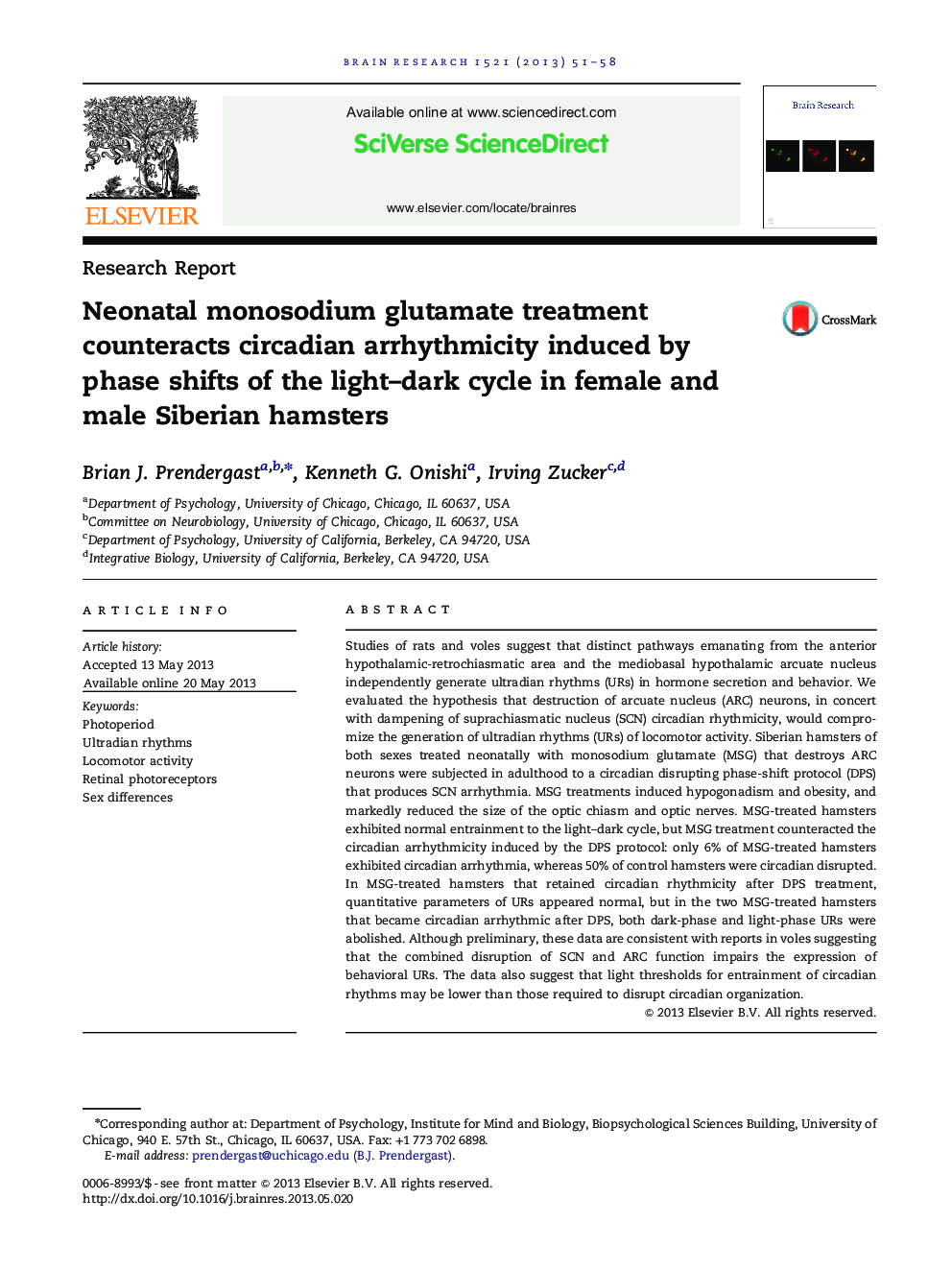| کد مقاله | کد نشریه | سال انتشار | مقاله انگلیسی | نسخه تمام متن |
|---|---|---|---|---|
| 6263831 | 1613918 | 2013 | 8 صفحه PDF | دانلود رایگان |
- Perinatal MSG substantially reduced the size of the optic nerve.
- MSG counteracted circadian rhythms disruption induced by phase shifts.
- MSG did not affect URs or CRs in entrained hamsters.
- MSG abolished URs in the few hamsters that became circadian arrhythmic in adulthood.
- Light thresholds differ for disruption versus entrainment of circadian rhythms.
Studies of rats and voles suggest that distinct pathways emanating from the anterior hypothalamic-retrochiasmatic area and the mediobasal hypothalamic arcuate nucleus independently generate ultradian rhythms (URs) in hormone secretion and behavior. We evaluated the hypothesis that destruction of arcuate nucleus (ARC) neurons, in concert with dampening of suprachiasmatic nucleus (SCN) circadian rhythmicity, would compromize the generation of ultradian rhythms (URs) of locomotor activity. Siberian hamsters retain-->of both sexes treated neonatally with monosodium glutamate (MSG) that destroys ARC neurons were subjected in adulthood to a circadian disrupting phase-shift protocol (DPS) that produces SCN arrhythmia. MSG treatments induced hypogonadism and obesity, retain-->and markedly reduced the size of the optic chiasm and optic nerves. MSG-treated hamsters exhibited normal entrainment to the light-dark cycle, but MSG treatretain-->ment counteracted the circadian arrhythmicity induced by the DPS protocol: only 6% of retain-->MSG-treated hamsters exhibited circadian arrhythmia, whereas 50% of control hamsters were circadian disrupted. In MSG-treated hamsters that retained circadian rhythmicity after DPS treatment, quantitative parameters of URs appeared normal, but in the two MSG-treated hamsters that became circadian arrhythmic after DPS, both dark-phase and light-phase URs were abolished. Although preliminary, these data are consistent with reports in voles suggesting that the combined disruption of SCN and ARC function impairs the expression of behavioral URs. The data also suggest that light thresholds for entrainment of circadian rhythms may be lower than those required to disrupt circadian organization.
Journal: Brain Research - Volume 1521, 12 July 2013, Pages 51-58
